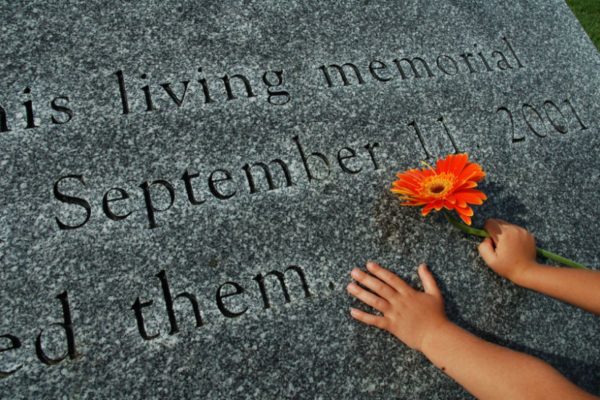On Sept. 12, 2001, I was revising a middle-school textbook I had co-authored with another historian when I received a call from my editor. “You know what happened yesterday,” he declared.
Of course I did. Like many Americans, I had watched the terrorist attacks on the World Trade Center and the Pentagon on television. “You have to write something for the latest edition,” he said.
I had already been wondering how I would address the events still so raw for eighth-graders. That afternoon I took a stab at it.
The words came quickly, if not easily: two planes transformed by terrorists into “guided missiles slamming” into the twin towers and “setting them aflame”; people “leaping to their deaths” from the buildings to avoid being “burned alive”; two more planes suddenly becoming “weapons of war,” one hitting the Pentagon, the other “crashing to the ground” as “doomed” passengers “stormed the cockpit” to prevent another attack.
When my editor received the draft, he called again. “All wrong!” he barked. “We’ll be selling this book to New York City school children. Some of them have lost parents, relatives and friends of their families. They’re only 12 or 13, and what you’ve written is too hot for some of them to handle.”
In the end, we settled on a less explosive rendering of events and stressed the unifying effects of the attacks in their immediate aftermath. I focused on the candlelit vigils all over the country and members of Congress, Republicans and Democrats alike, singing “God Bless America” on the steps of the Capitol.
What my editor wanted was closer attention to context. Historians examine context all the time as we try to understand the complexities of the past. But in this case, I had ignored the most important context: the present in which our young readers lived.
The events were still too fresh for them. A good text demanded sensitivity missing from that first draft. As important, we knew little about what had occurred, little about who did it or why or even the number of people who perished, let alone what that terrible day meant.
Today we know much more. And we face the opposite problem. The students who read our textbooks and whom we teach in class are far removed from 9/11. They have no memory of that day.
They also confront a sharply different context. In the fight against terror, Afghanistan has become America’s longest war, and the Islamic State group has replaced al Qaeda as the most daunting threat. What once united us now often divides us as we battle over the legacy of the Patriot Act, the meaning of immigration and the mounting refugee crisis.
Today we need to teach 9/11 with the perspective that comes from distance, much as the way we teach about the Civil War or the Japanese attack on Pearl Harbor, however painful they were to those who experienced them.
Whereas 16 years ago textbooks and classrooms concentrated, as I did, on the event and its immediate impact and on the emotional and psychological effects, now we must probe more deeply.
We must examine 9/11 through the hard lens of history. That demands a dispassionate accounting of causes and consequences and an appreciation of the increasingly tangled circumstances we have faced since that day.
We need to do a better job exploring the complex set of causes that produced 9/11, among them the rise of Islamic fundamentalism and postcolonial nationalism as well as the spread of globalism and regional conflicts.
And we can look at the consequences even as they are still unfolding, not just in the Middle East but also in other things such as airport security lines and heavily armed police in cities across the globe.
To those we add the creation of new intelligence bureaucracies, the economic and political costs of security, the rise of anti-Muslim nativism and the lessons learned about how to protect ourselves.
Taken together, we can see 9/11 as a hinge of history, no longer just the horrific shock we felt in the present of 2001, but the first stroke in what has become a larger threat looming across multiple fronts.
Unless we invite our students to share that understanding, they are destined to live in ignorance, which might be the most dangerous consequence of all.
Michael B. Stoff is an associate professor of history and a University Distinguished Teaching Professor at The University of Texas at Austin.
A version of this op-ed appeared in the Houston Chronicle, Austin American Statesman, McAllen Monitor, Waco Tribune Herald, San Antonio Express News, and Psychology Today.
To view more op-eds from Texas Perspectives, click here.
Like us on Facebook.




